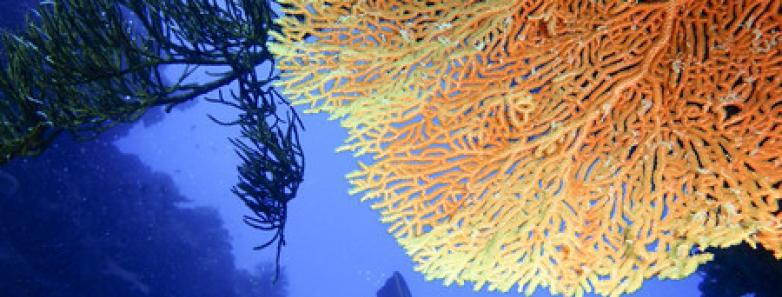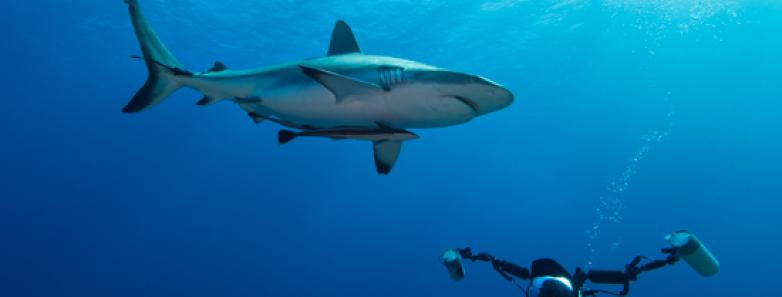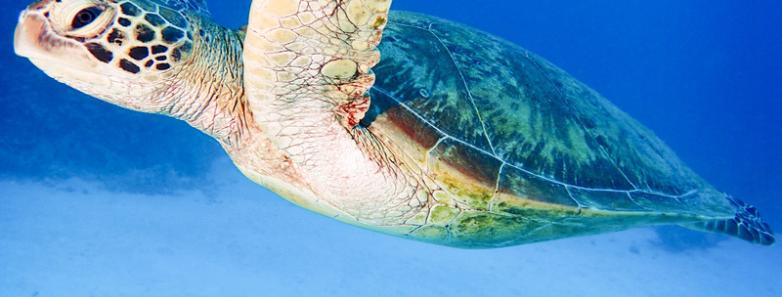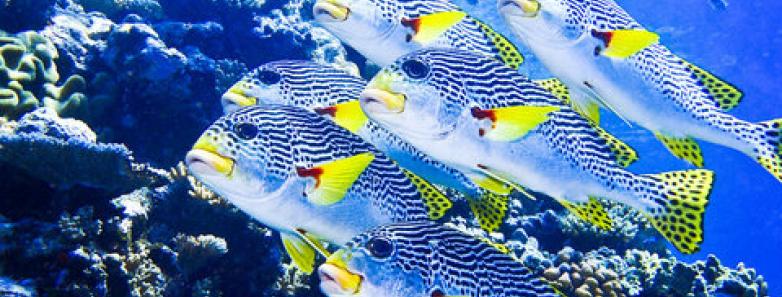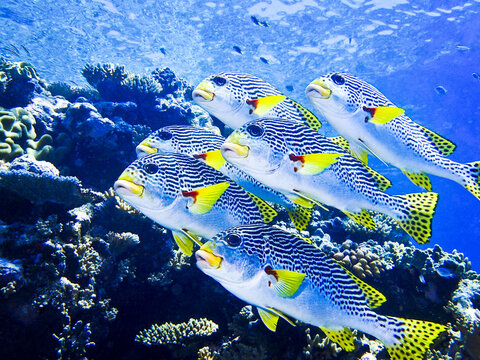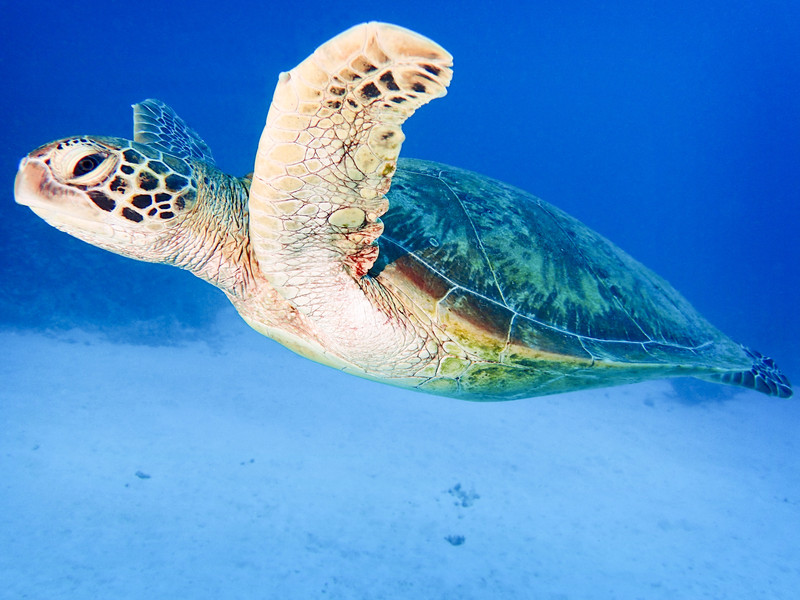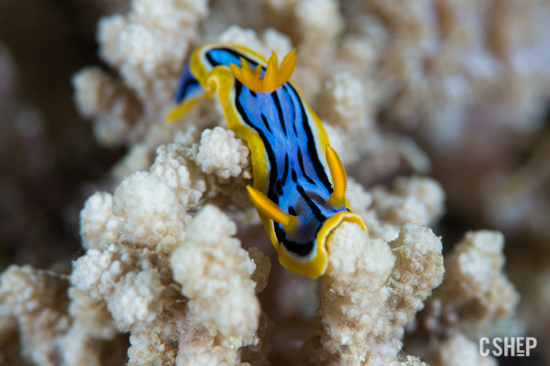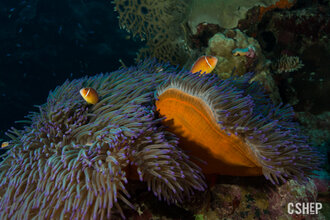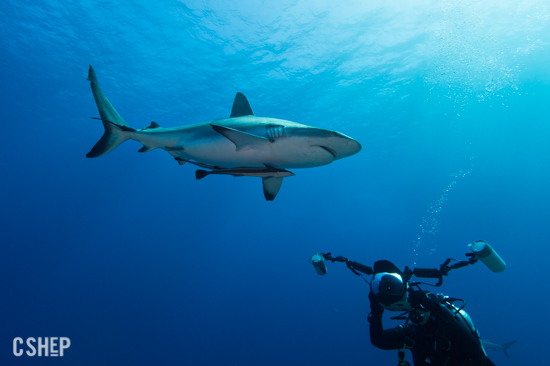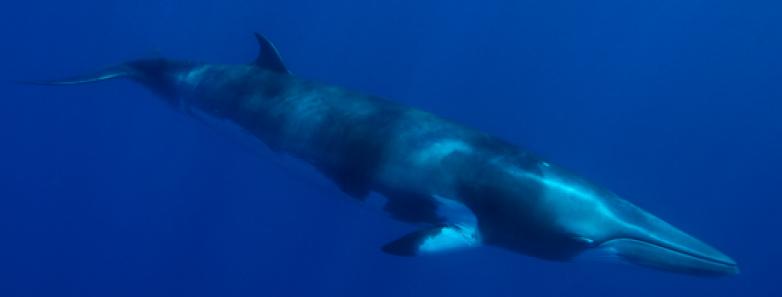SCUBA DIVING THE GREAT BARRIER REEF, AUSTRALIA
GREAT BARRIER REEF DIVING HIGHLIGHTS
Designated as a UNESCO World Heritage Site in 1981, this spectacular reef system stretches 1,400 miles down the east coast of Australia, from Cape York Peninsula in northeastern Queensland, to Bundaberg in the south. Comprising 600 islands and close to 2,900 individual reefs, choosing where to dive and what to see can be overwhelming. But don’t let this worry you. There are so many amazing facts about The Great Barrier Reef such as how it and the Coral Sea boast over 600 types of coral, which in turn provide a home to 1,625 fish species and 133 species of sharks and rays. Wherever you choose to dive, this huge and glorious reef system won’t fail to disappoint, and could likely be one of the best scuba diving trips you’ll ever make.
Interested in diving the Great Barrier Reef? View the live availability of some of the best liveaboards in the Great Barrier Reef and book online at the best price or check out our sidebar for specials and workshops!
Our thanks to Mike Ball Dive Expeditions for images on this page.
JUMP TO:
Marine Life - Best Dive Sites - Best Time to Dive
Diving Conditions - How to Get There - How to Dive Galapagos
GREAT BARRIER REEF DIVE RESORTS AND LIVEABOARDS
Shore diving the Great Barrier Reef is concentrated around the town of Cairns, where day boats take divers and snorkelers out to the nearby reefs. This world-famous spot is popular with tourists and backpackers so it can get quite busy during peak season. For those willing to venture further north, Port Douglas offers some upmarket resort options as an alternative to the Cairns hostel scene.
The quality of diving improves as you venture further from the mainland, and some of the best sites are only accessible via liveaboard. They offer a range of trips to the outer reefs and into the Coral Sea to dive some breathtaking spots.
Find the best Great Barrier Reef liveaboard for your next dive vacation.
INtro to the Great Barrier Reef
As the largest living structure on Earth, the Great Barrier Reef is one of the best scuba diving destinations in the world, offering a variety and abundance of marine life seldom found elsewhere. Much of the reef falls within the Great Barrier Reef Marine Park, and so many of the dive sites enjoy protected status. Beyond the barrier reef itself, the Coral Sea is a hidden gem of scattered reefs and atolls boasting rarely visited dive sites and some of the best diving in Australia.
Images courtesy of the Coral Sea Dreaming Liveaboard
Chromodoris annae Nudibranch (LEFT) & Pink Anemonefish (RIGHT)
View Location on Google Map
WHEN TO GO
The diving season in the Great Barrier Reef is year-round, but the best time to go would highly depend on what you want to see.
More on the best time to dive the Great Barrier Reef.
Back to Menu
Great Barrier Reef DIVING INFORMATION
great barrier reef MARINE LIFE & PHOTOGRAPHY SPECIES
The Great Barrier Reef is teeming with life, and while some notable macro can be found, it’s the big stuff that really stands out here. The best of the pelagic species tend to gather at the northernmost reefs and atolls where, in the winter months of June and July, large numbers of migratory dwarf minke whales gather. Beaked whales, sperm whales, and bottlenose dolphins also congregate here to feed along the edge of the deep ocean shelf.
Many shark species reside in the outer reefs, and you may find silky, silvertip, whitetip, and grey reef sharks joining you on your dive. The occasional whale shark or hammerhead passes through, and eagle rays, mantas, loggerheads, and green turtles are all common sights.
A grey reef shark swims overhead during the shark dive at Osprey Reef.
All along the Great Barrier Reef, an abundance of smaller reef species can be found in the healthy corals. Clownfish darting in and out of their anemones, electric purple anthias, schools of yellow snapper, parrotfish, the list is endless. Larger species such as grouper, cod, and bream share the reef with schooling pelagics, making for a breathtaking array of color and motion.
Read Christine Shepard’s Bluewater trip report from her wonderful experience with dwarf minke whales on the Coral Sea reefs.
If you love the idea of reef diving but don't want to travel too far, check out scuba diving in the Red Sea.
BEST TIME TO DIVE
Queensland’s tropical climate makes the Great Barrier Reef and Coral Sea superb for diving year-round, but conditions and species do vary between the seasons. The summer months from December through to February enjoy warmer water and great visibility, while the cooler winter months of March to November are the best time to spot large marine mammals such as humpback and minke whales.
Interested in diving with whales? Check out our list of the Best Places to Dive with Whales.
DIVING CONDITIONS
Water temperature: Ranges from 73 to 84oF (23 to 29oC)
Visibility: Inshore day trip dives between 50ft and 100ft, while liveaboard sites in the Coral Sea can reach 150ft.
Depth Range: Mostly between 30ft and 100ft.
Diving Difficulty: Many people learn to dive on the Great Barrier Reef, and there are hundreds of sites suitable for beginners. More remote reefs such as Osprey require some experience, and the Ribbon Reefs are best for advanced divers.
BEST DIVE SITES in the great barrier reef
Based on our numerous visits to the area, we've rounded up some of the best dive sites in the Great Barrier Reef:
Osprey Reef: One of the best locations in the Coral Sea, Osprey Reef sits in the very north of the system and has a range of sites including drift diving at North Horn Wall, and the shark feeding amphitheater at North Horn. Large pelagics gather here to feed throughout the year, and whale sharks, rays, and turtles will often make an appearance.
Ribbon Reefs: This 75-mile chain of ten individual reefs is home to a fantastic array of coral and fish life, and boasts some really special dive sites. The world-famous Cod Hole is home to dozens of huge potato cod and some very friendly giant Napoleon wrasse, known locally as Maori wrasse. Steve’s Bommie, an extraordinary isolated pinnacle, is bursting with colorful life, and Lighthouse Bommie is known for its population of golden sea snakes.
Heron Island: Further south, Heron Island is a notable nesting site for green and loggerhead turtles, so divers are likely to enjoy the company of several of these creatures on each dive. The reefs also feature various cleaning stations, such as the one at North Bommie, which attracts manta rays and turtles in to shallower waters. Heron Bommie, the island’s signature dive site, is home to manta and eagle rays, reef sharks, and flowery cod.
Lady Elliot Island: This world-class dive destination is a coral cay surrounded by pristine fringing reef, home to a large and diverse fish population. Like Heron Reef, it is well known as a hotspot for turtles and manta rays, and the island’s location next to the continental shelf drop-off means there is a chance to swim with visiting humpback whales between May and October.
SS Yongala: Probably the best-known wreck in Australia, the Yongala lies in open water, its deepest point at 100ft. This 360ft wreck is largely intact, and provides an isolated artificial reef sanctuary for all number of species including barracuda, rays, trevally, and even bull sharks.
Images courtesy of the Coral Sea Dreaming Liveaboard
Back to Menu
great barrier reef TRAVEL INFORMATION
HOW TO GET TO THE GREAT BARRIER REEF
There are direct international flights from the US to several Australian airports such as Sydney Airport (SYD), or from Europe via most major Asia hubs. Then transfer on to Cairns Airport (CNS) where most of the liveaboards depart from. Local flights are also available out to the reef islands.
Check out our list of the Best Liveaboard Destinations, here.
HOW TO DIVE THE GREAT BARRIER REEF
By far the best way to experience the Great Barrier Reef is by liveaboard, most of which depart from Cairns for 3-night, 4-night, or 7-night trips. For keen divers we would suggest arranging a minimum of 3 nights at sea. This will allow you to reach some lovely unspoiled spots that the day boats can't get to.
For day trips, the Great Barrier Reef is easiest accessed from Cairns. Dozens of boats of all sizes depart daily out to the local reefs, and the journey normally takes between 30 and 90 minutes. Although there is plenty to see, and it provides an affordable introduction for new divers, the sheer number of visitors to this popular spot has had an impact on the health of the reef. Cairns has a huge number of hotels and hostels to suit all budgets, as well as a busy downtown full of restaurants and bars.
Day trips to the reef are also available from Port Douglas, and boats from here tend to travel further out to the more remote reefs such as Agincourt and Opel. This provides a far better experience for qualified divers, where the reefs are in great health and full of life. Despite the additional travel time, we would definitley reccomend a trip that takes you several hours offshore and away from the busiest reefs. Port Douglas itself is much quieter than Cairns, with mostly resort-style hotels.
OTHER THINGS TO DO
Queensland has a vibrant tourism industry and there is all manner of attractions and activities available top-side. Popular trips include hiking through the Tropical Rainforests of Daintree and Cape Tribulation, or to the spectacular waterfalls at Atherton Tablelands. Visiting one of the many wildlife parks that specialize in indigenous species is a great day out, or for the more adventurous travelers, enjoy white water rafting on the Barron River, or take part in a cultural tour to visit Aboriginal rock art deep in the outback.
Back to Menu
liveaboards in the great barrier reef
See the availability of liveaboards in the Great Barrier Reef and book online. Best price guaranteed. No credit card fees.
The rates shown below are per person in USD. Some operators may quote in a different currency and the final pricing may vary depending on the latest exchange rates.
Back to Menu
OTHER USEFUL INFORMATION
- Currency: Australian Dollar (AUD)
- Language: English
- Time Zone: Australian Eastern Standard Time (GMT+10)
- Electricity: 230V
Back to Menu
GOT QUESTIONS? READY TO BOOK?
Call us today at +1-310-915-6677 or email us info@bluewaterdivetravel.com
And let us book your dream vacation!
Back to Menu
underwater images
Coming Soon!

